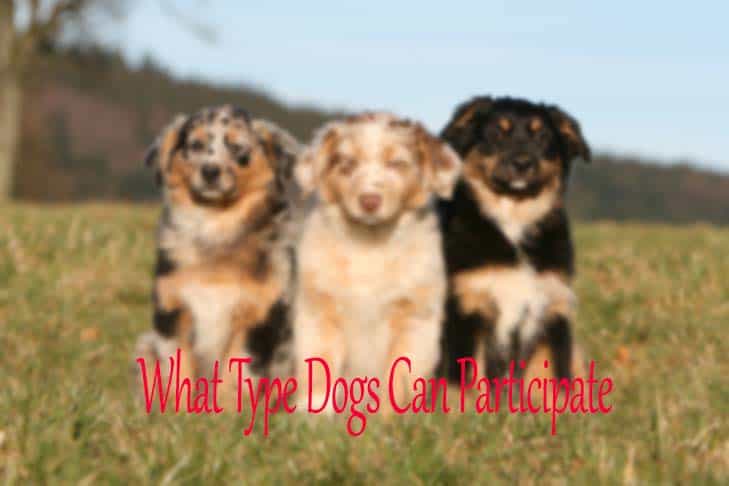One of the lesser-known signs of allergies in dogs is when their third eyelid becomes visible. This peculiar phenomenon often puzzles pet owners, leaving them wondering about the underlying causes and best course of action to alleviate their furry friend’s discomfort. In this blog, we delve into the intricate details of how a dog’s third eyelid showing can be a telltale sign of allergies. By understanding the connection between this uncommon occurrence and allergic reactions, pet parents can be better equipped to address their dog’s health needs. Join us as we uncover the mystery behind this intriguing aspect of canine allergies.
Understanding the Dog Third Eyelid
When it comes to dog third eyelid showing allergies, it is essential to understand the role of the third eyelid in dogs. The third eyelid, also known as the nictitating membrane, is a protective layer of tissue that helps keep the eye moist and shielded from debris. In dogs, this membrane can become more visible, especially when they are experiencing allergies or eye irritation.
Causes of Dog Third Eyelid Showing Allergies
Dog third eyelid showing allergies can be triggered by a variety of factors, including pollen, dust, mold spores, or certain foods. When a dog comes into contact with an allergen, their immune system may overreact, leading to symptoms such as itchiness, redness, and ocular discharge.
In some cases, underlying health issues like conjunctivitis or dry eye syndrome can also contribute to the visibility of the third eyelid.
Treatment Options for Dog Allergies Affecting the Third Eyelid
Addressing dog third eyelid showing allergies involves identifying and eliminating the allergen causing the reaction. Your veterinarian may recommend antihistamines, topical ointments, or even dietary changes to manage your dog’s allergies effectively.
- Regularly cleaning your dog’s living environment can help reduce allergen exposure.
- Using hypoallergenic grooming products and maintaining good eye hygiene can also aid in alleviating symptoms.

Common Allergies in Dogs
Dogs, just like humans, can suffer from various allergies that may manifest in different ways. One common indication of allergies in dogs is the visibility of the third eyelid, which can be a sign of an allergic reaction to something in their environment or diet.
Skin Allergies
Dogs can develop allergies to certain substances that come into contact with their skin, such as pollen, dust mites, or certain chemicals. Symptoms can include itching, redness, and hair loss.
Food Allergies
Food allergies in dogs can cause gastrointestinal upset, skin issues, and even affect their eyes. It’s essential to identify the specific ingredient causing the allergy for proper management.
Environmental Allergies
Environmental allergens like grass, mold, or pollen can trigger allergic reactions in dogs. Symptoms may include sneezing, watery eyes, and skin irritation.
Link between Allergies and Third Eyelid Showing
When a dog’s third eyelid is showing, it can often be a sign of underlying health issues, including allergies. Allergies in dogs can manifest in various ways, and one common symptom is the protrusion of the third eyelid. This can happen due to the immune system’s response to allergens, leading to inflammation and irritation in the eyes.
Understanding Allergies in Dogs
Allergies in dogs can be triggered by various factors such as pollen, dust mites, certain foods, or even insect bites. When a dog comes into contact with an allergen, their immune system reacts abnormally, causing symptoms like itching, redness, and swelling, including the protrusion of the third eyelid. It’s important to identify the specific allergen causing the reaction to effectively manage the symptoms.
Management and Treatment
Managing allergies in dogs involves minimizing exposure to known allergens, such as regular grooming to remove pollen and dust, and providing a well-balanced diet to support the immune system. In cases where allergies cause severe discomfort and eye issues like a visible third eyelid, consulting a veterinarian for appropriate treatment is crucial. Treatment may involve antihistamines, steroids, or other medications to alleviate symptoms and reduce inflammation.
Symptoms to Look for in Dogs
When it comes to identifying allergies in dogs, paying attention to various symptoms can help you detect potential issues related to their third eyelid showing allergies. Some primary symptoms to look for include:
Excessive Scratching
Dogs with allergies tend to scratch excessively, especially around their eyes. This could lead to redness and irritation that require attention.
Watery Eyes
Another common symptom is watery eyes in dogs, which might be accompanied by squinting or pawing at the eyes. The presence of tears could indicate an allergic reaction.
Sensitivity to Light
Dogs with allergies may exhibit sensitivity to light, leading to squinting or avoiding bright environments. It’s essential to observe any discomfort they show under lighting.
Treatment Options for Allergies and Third Eyelid Issues
If your dog’s third eyelid is showing due to allergies, it’s crucial to address both the underlying allergies and any resulting eye issues. Treatment options vary based on the severity of your pet’s condition.
Treating Allergies
Addressing the root cause is essential. Consult with your vet to identify the specific allergen triggering your dog’s reactions. Allergy testing can help determine the allergen, enabling targeted treatment.
Eye Treatment
For eye issues related to allergies, your vet may prescribe eye drops or ointments to reduce inflammation and irritation. Ensure you follow the prescribed treatment regimen diligently to promote healing.
- Administer medications as directed
- Monitor your dog’s eyes for improvement
- Provide a stress-free environment for recovery
Preventive Measures and Best Practices
When it comes to dog allergies causing their third eyelid to show, certain preventive measures can help manage the situation effectively. Proper dog eye hygiene is crucial in preventing allergens from irritating the eyes. Regularly cleaning your dog’s eyes with a gentle eye wash solution can help remove any potential irritants. Moreover, ensuring your dog’s living environment is clean and dust-free can significantly reduce the chances of allergic reactions.
Safe Grooming Practices
When grooming your dog, use mild, hypoallergenic shampoos to prevent skin irritation that can lead to allergies. Avoid using products with harsh chemicals that may trigger allergic reactions in your furry friend. Additionally, regular grooming can help reduce the buildup of allergens on your dog’s fur, further preventing eye irritations.
Proper Nutrition
Providing your dog with a balanced and nutritious diet plays a vital role in boosting their immune system, making them less susceptible to allergies. Opt for high-quality dog food that is free from common allergens such as grains and artificial additives. Additionally, including omega-3 fatty acids in their diet can help reduce inflammation and alleviate allergy symptoms.
Frequently Asked Questions
-
- What is the third eyelid in dogs?
- The third eyelid, also known as the nictitating membrane, is a transparent or translucent membrane that moves horizontally across the eye for protection and moistening.
-
- Why does a dog’s third eyelid show sometimes?
- The third eyelid might show in dogs due to various reasons such as allergies, eye infections, irritation, or other health issues.
-
- How do allergies affect a dog’s third eyelid?
- Allergies can cause inflammation in a dog’s eyes, leading to the third eyelid being more visible or protruding. It is a common symptom of allergic reactions in dogs.
-
- When should I be concerned about my dog’s third eyelid showing due to allergies?
- If your dog’s third eyelid is frequently showing and accompanied by other symptoms like redness, discharge, or discomfort, it is advisable to consult a veterinarian for proper diagnosis and treatment.
-
- Can allergies be treated if the dog’s third eyelid is showing?
- Yes, allergies in dogs can be managed and treated with the help of a veterinarian. Treatment may involve identifying and avoiding the allergen, medications, or other interventions based on the underlying cause.
Unveiling the Mystery: A Final Take on Dog Third Eyelid Showing Allergies
Exploring the phenomenon of dog third eyelid showing allergies has shed light on a common yet often overlooked issue among pet owners. Understanding the potential causes, such as environmental allergens, food sensitivities, or underlying health conditions, is crucial in providing timely care for our furry friends. Remember, if you notice your dog’s third eyelid showing frequently, it could be a sign of discomfort or an immune response.
Consulting with a veterinarian for a proper diagnosis and treatment plan is key to managing allergies in dogs effectively. By staying vigilant and proactive, we can ensure our canine companions lead happy, healthy lives free from the discomfort of allergic reactions.



